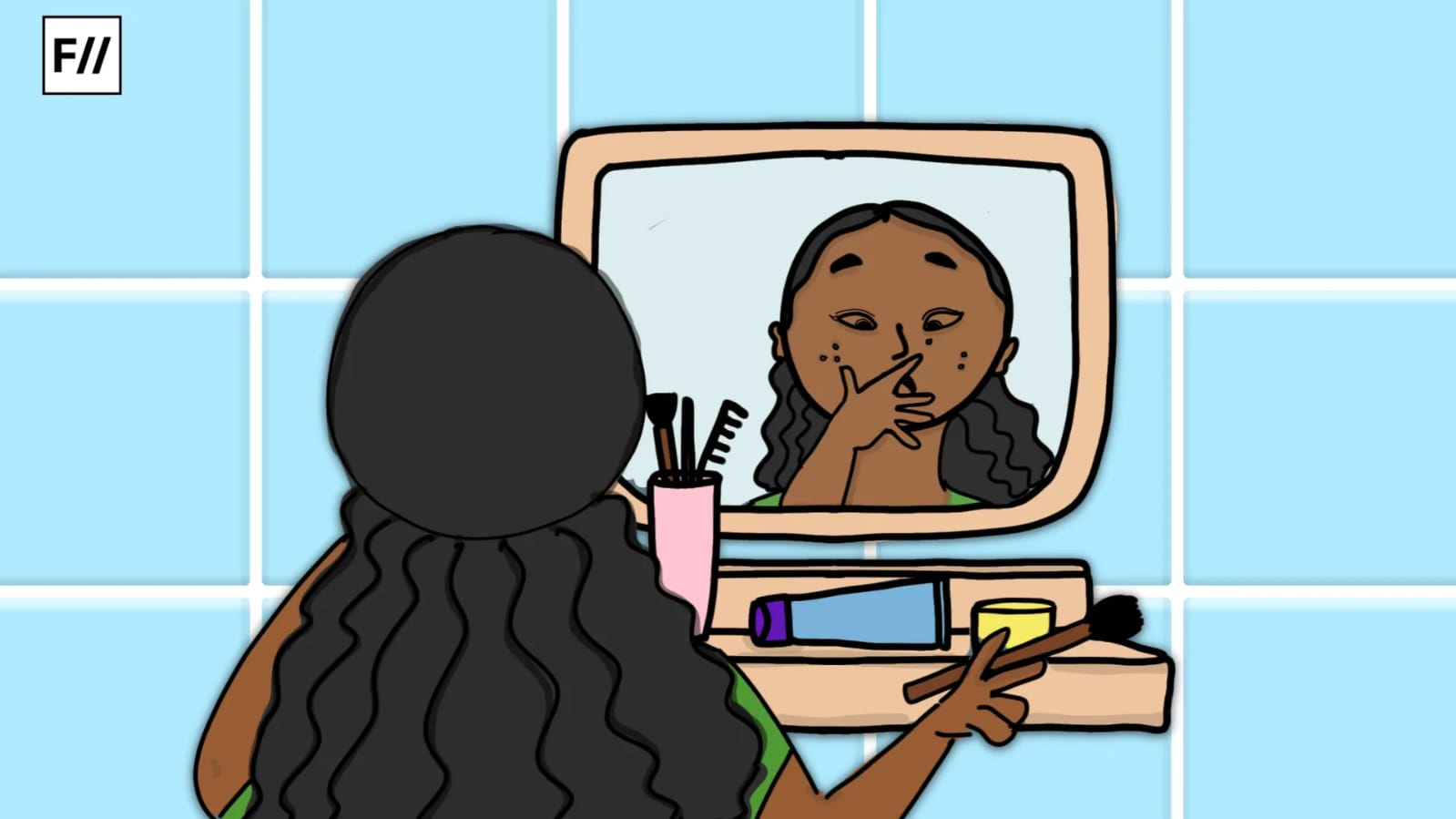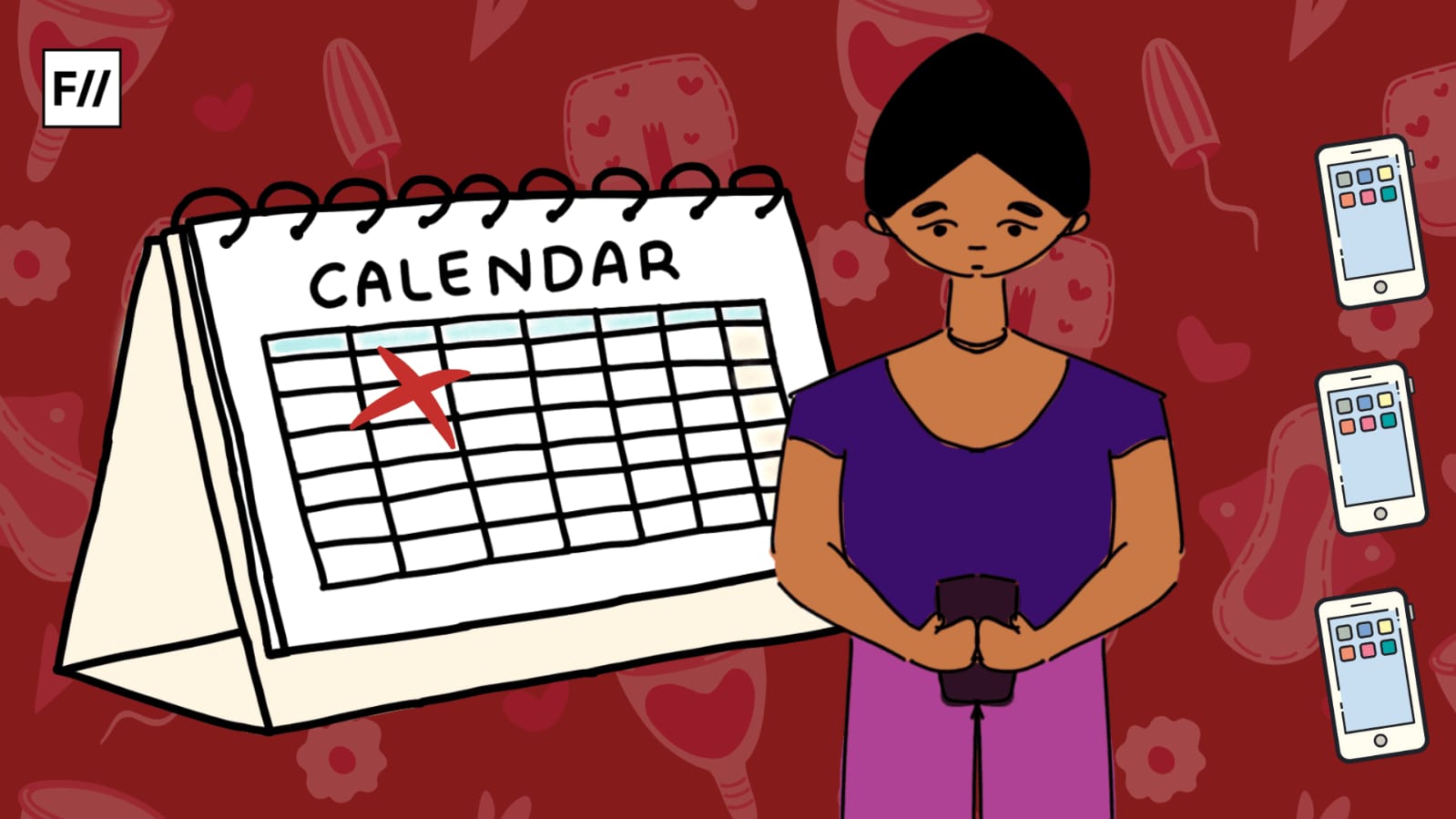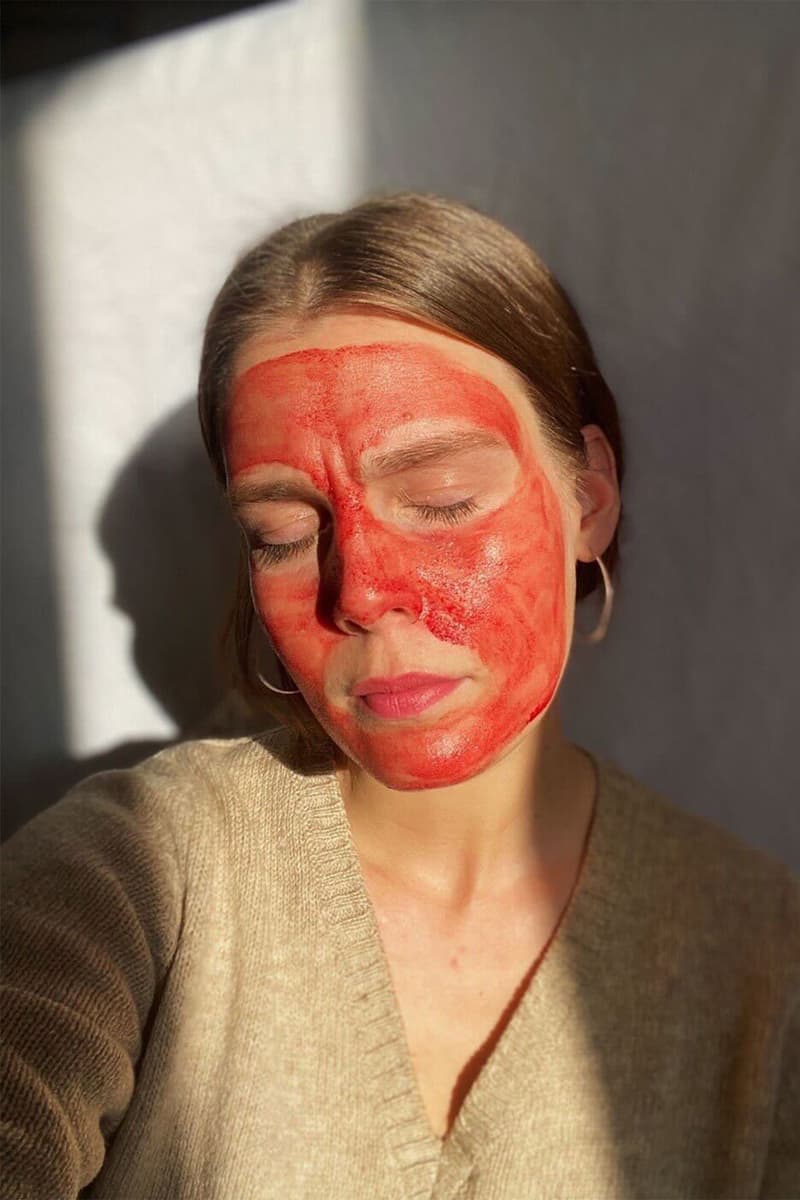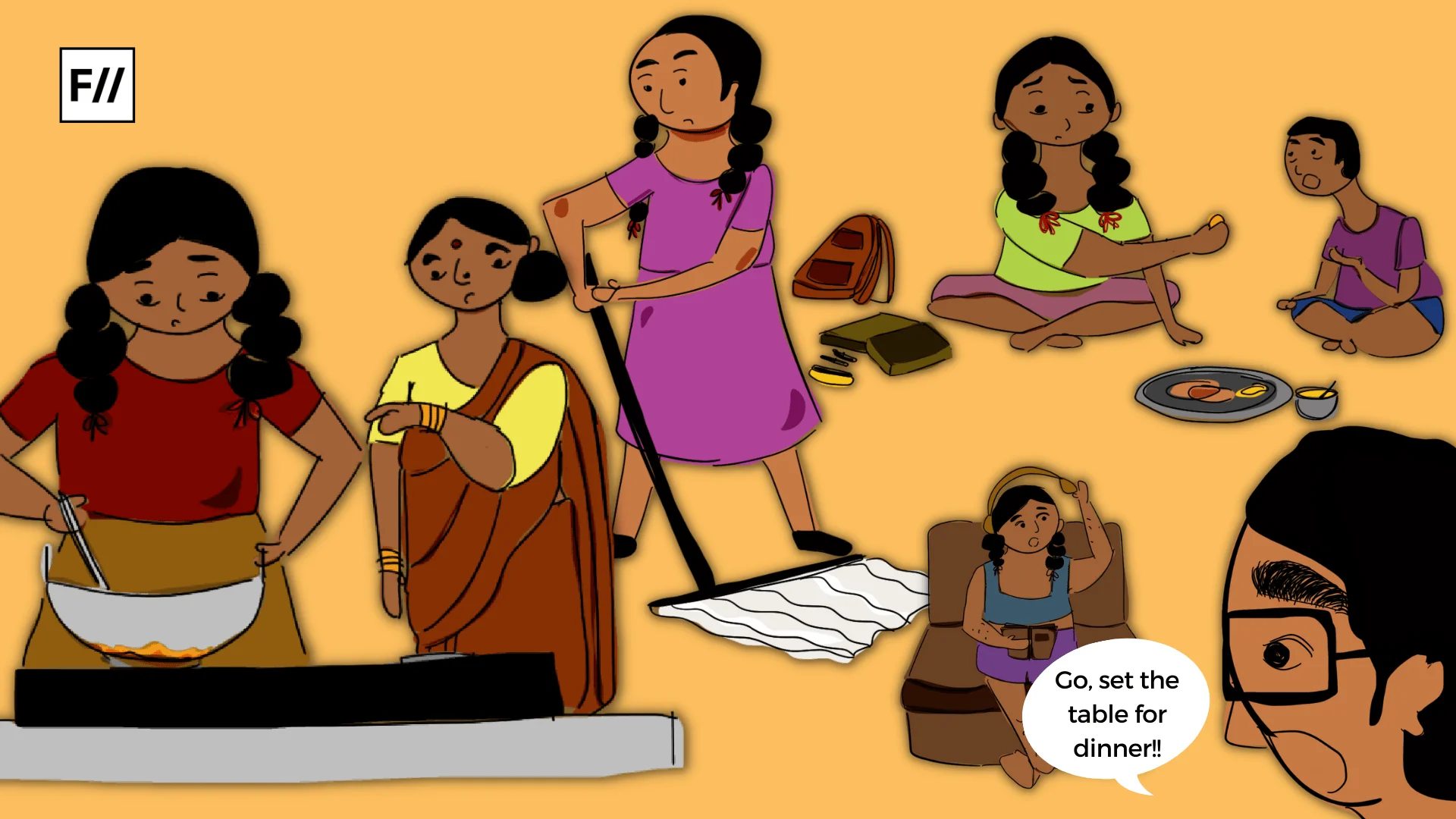From using a blue ink stain on sanitary napkins in advertisements to smearing menstrual blood on our faces as beauty hacks, society has certainly changed in its outlook towards menstruation.
In a world obsessed with notions of beauty, plural to signify its dynamism and subjectivity, we must question to what extent they can go to embody it. The global beauty and personal care market size in 2025 in India, contributed $33.08 billion. It is the fastest growing Beauty and Personal Care (BPC) market in the world. This market thrives on consumer consciousness about existing standards of society, self-desires, psychological conditioning and most importantly, influencer content creation that capitalises on attention and a desire for emotional gratification.
The recent ‘beauty hack’ in question is Menstrual Masking. Social media platforms, such as Instagram, TikTok and YouTube, are flooded with influencers applying their menstrual blood on their faces as a ‘DIY (Do-It-Yourself) Face Mask’. They claim that it provides a natural glow to the skin as menstrual blood is rich in stem cells, proteins and cytokines that repair skin and reduces inflammation. The veracity of this information and the reasons behind the virality of this beauty trend is explored ahead.
Why is menstrual masking “trending”?
It was the Kardashians, the global BPC brand ambassadors, who made the “Vampire Facial” where one undergoes platelet-rich plasma microneedling, famous. The possibility of this medical procedure being available in a much subsidised and self-help friendly format created a shock value that met the overdone “natural and organic” appeals on social media. The final push was its amplification as a feminist statement declaring self-acceptance and calling for the destigmatisation of menstrual fluids.

But because social media is a product of many contextual factors, the following socio-historical analysis provides a broader framework to understand its virality better.
The instant traction that this trend has gathered is not surprising given that in the United States for example, the average monthly out of pocket expenditure on beauty products total to nearly $3756 or ₹3.35 lakh annually. In India, the per person revenue for BPC is approximately ₹1900. In fact, a fourteen year old survey by ASSOCHAM (Associate Chambers of Commerce and Industry in India) found that over 95% of teenagers in Delhi spent anywhere from ₹4000 to ₹5000 on cosmetics.
In contrast to this, personal healthcare and hygiene during menstruation is a heavily debated financial issue. It was only in 2018 that the Indian government removed a 12% Goods and Service Tax (GST) on sanitary products. Yet, the raw materials that go into its making cost anywhere from 12-18% GST, keeping the costs significantly high. This, popularly known as the ‘Pink Tax’, is still a heavily contested debate in leading nations such as the US, UK, Germany, France and Australia. A menstruator (the gender-neutral term for those who menstruate) in India, spends a median amount of ₹106.5 on sanitary products per month, as compared to $13.25 or ₹1182 in the United States.
A menstruator (the gender-neutral term for those who menstruate) in India, spends a median amount of ₹106.5 on sanitary products per month, as compared to $13.25 or ₹1182 in the United States.
Initiatives by the Indian government such as the ‘Scheme for Promotion of Menstrual Hygiene’ provide subsidised sanitary napkin packs through Accredited Social Health Activists or ASHA workers at a subsidised rate of ₹6 for a pack of 6 napkins and the Pradhan Mantri Bhartiya Janaushadhi Pariyojana (PMBJP) offers “Jan Aushadhi Suvidha Sanitary Napkins” at ₹1 per napkin. But the quality is questionable and distribution, limited.
More so, this is only the costs of purchasing sanitary pads or tampons and does not account for the additional costs of medications for physical discomfort (lower body pain, abdominal cramps, nausea, fatigue), supplementary clothing or undergarments and non-medicinal products such as heating pads.

Compounding the financial burdens are the social implications of being a menstruator. The stigma, scrutiny and shame attached to a biological process that is vital for life, undergone by a significant percentage of the global population and unknown to only the ignorant, is appalling. It is for these reasons that the glorification of menarche rituals is critiqued for reinforcing traditional gender roles of women as potential wives, child bearers and legacy creators, metaphorically.
Nancy Fraser’s critique of Jürgen Habermas’ conception of the bourgeois public sphere takes note of how this idealistic and exclusionary model takes into consideration only the capitalistic and public contributions of propertied men. Her subaltern counterpublics theory dismissed the strict binary between the public and private as economic and personal, and argued against marginalising non-waged work as outside the “official economy” and hence, politically invisible.
These menarche traditions might also incorrectly portray the achievement of maturity, leading to child marriages, an unfortunate consequence India continues to suffer.
Surrounded by a plethora of disadvantages, a ‘hack’ that targets it all: skin, stigma and silence surrounding menstruation becoming viral, was inevitable.
Does the hack work?
BPC advertising is so extensive that urban teenagers are being manipulated as the most gullible consumers. While applying sunscreen is necessary for all ages to prevent melanoma and sun damage, BPC marketing goes beyond sun protection in targeting their young customer base. The urban teen consumers are conditioned to believe that they need niacinamide products and anti-ageing retinol serums today. Homemade packs rarely stand a chance when beauty is marketed as self-care, costly, but “worth it”.
BPC advertising is so extensive that urban teenagers are being manipulated as the most gullible consumers.
At the outset, the reasoning behind menstrual masking sounds plausible as people may think menstrual blood is full of nurturing properties. Every month the uterus regenerates a lining preparing for a possible pregnancy and when the fertilised egg is not received, the thickened uterine lining sheds itself and expels blood and tissue from the vagina.

A study published in the National Library of Medicine attributed wound healing and tissue repairing properties to menstrual fluid-derived plasma that is first processed, sterilised and optimised to be used with controlled and professional equipment under duly tested medical conditions. Menstrual blood on the other hand contains uterine tissue, vaginal fluids, hormones and microorganisms which can trigger bacterial infections given that it is not sterilised. With no tests or prescribed guidelines of use, this trend is another addition to social media’s myth bubble. It is also another example of BPC exploiting the conscious perception of appearance, social anxiety and body-image related insecurities of consumers.
Another study published in the Federation of American Societies for Experimental Biology Journal found that wounds coated with plasma extracted from menstrual blood fully healed within twenty-four hours as against only 40% recovery when applied with regular blood plasma. But, the note of caution lies deeper in the study where the processing of the menstrual blood under sterile conditions and its clinical injection by professionals is explained.
The journey from the womb to the face is packed with bacteria, cervical mucus and dead tissue along the way.
The journey from the womb to the face is packed with bacteria, cervical mucus and dead tissue along the way. Dr Shireen Furtado, a senior consultant in Medical and Cosmetic Dermatology at Aster CMI Hospital, warns against this practice. She conveys how bacteria and fungi such as the microbe Staphylococcus aureus in contact with broken skin or active acne, can trigger an immediate reaction causing serious infections worsening skin conditions. Experts have also raised concerns over Sexually Transmitted Infections (STIs) contaminated menstrual blood.
James Penny wrote how empowering activism had run its course because it failed to meaningfully articulate a program of social change. He attributed the gradual decline of gender-based movements to their gradual disillusionment from reality and disintegration from society, limiting any real-world political impact.
The disadvantage of misplaced social media activism lies in its recurrent pattern of performative activism over tangible empowerment, resulting in estrangement. The evidence from dermatology and science credits zero points to the benefits of menstrual masking and reiterates the potential harm in using menstrual blood as a healing face mask. Costly as it may be, clinical PRP, Vitamin C, retinol or niacinamide usage under medical supervision, are the lab-tested options that are to be used to improve one’s skin, if and when prescribed, instead of falling for gimmicky social media fads that are almost always “too good to be true”.
About the author(s)
Second year student of Media Studies at CHRIST (Deemed to be University), BRC, Bangalore. A trained Kathak dancer, theatre artist and political nerd.







